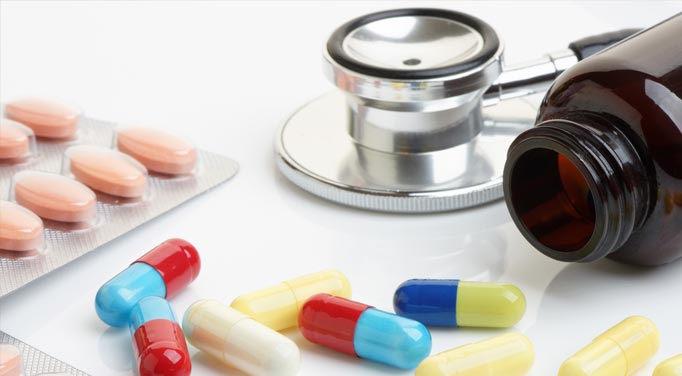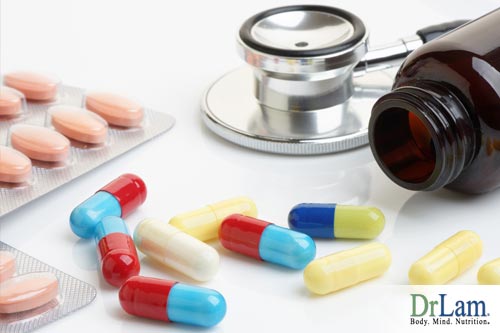 So many advertisements suggest cholesterol lowering drugs. What cholesterol lowering drugs are best for you, and what cholesterol lowering drugs are likely to casue you harm? The decision in August 2001 by the German Pharmaceutical giant Bayer AG to withdraw the cholesterol-lowering statin drug Baycol from the market shocked the world. For years, the public was led to believe that these cholesterol lowering drugs were effective and even possessing other health benefits as well. Millions of statin prescriptions are written yearly in the United States alone.
So many advertisements suggest cholesterol lowering drugs. What cholesterol lowering drugs are best for you, and what cholesterol lowering drugs are likely to casue you harm? The decision in August 2001 by the German Pharmaceutical giant Bayer AG to withdraw the cholesterol-lowering statin drug Baycol from the market shocked the world. For years, the public was led to believe that these cholesterol lowering drugs were effective and even possessing other health benefits as well. Millions of statin prescriptions are written yearly in the United States alone.
Unfortunately, Baycol was linked to 31 deaths. Moreover, deaths occurred at the manufacturer's recommended initial dose (0.4 mg/day) as well as at the highest dose (0.8 mg/day). The majority of deaths occurred in elderly patients and more often in women.
There are other statin drugs on the market, such as Lipitor (the best seller). Like Baycol, these drugs are linked to the same rare muscle weakness, known as myositis, which occurs in about 1 in 1,000 statin users. Myositis occasionally progresses to rhabdomyolysis - a complete breakdown of muscle cells that can lead to kidney failure and death. Some experts believe that pravastatin (Pravachol) and fluvastatin (Lescol) may have less potential for these deadly drug interactions. The data at this time are not sufficient to declare one statin drug safer or more dangerous than the others.
For those with high LDL cholesterol, statin drugs are not the only solution. Implementing diet changes can be an effective alternative to statins and other cholesterol-lowering drugs.
Drug interactions and side effects with cholesterol lowering drugs, specifically statin drugs, are not new. Numerous scientific studies have reported adverse interaction including myositis when combinations of statins and other drugs, including warfarin (used to prevent blood clotting), clarithromycin (an antibiotic), and ketoconazole (an antifungal drug), are used. Laboratory tests have shown cancer development and liver damage in animals as well when high doses statin drugs are administered.
The Baycol fiasco is just the tip of the iceberg, illustrating the growing potential for medical complications from drug interactions. Worldwide, doctors are increasingly relying on numerous pharmaceuticals to control chronic conditions, from elevated cholesterol to diabetes to high blood pressure and osteoarthritis. In about a third of the Baycol cases, deaths occurred among people who also took gemfibrozil (Lopid) - a drug used to lower triglyceride levels.
Most statin adverse effects, including the musculoskeletal (including rhabdomyolysis) and liver damage, are dose-related. That is, higher doses bring increased risks. Each doubling of the statin dosage also doubles the incidence of liver enzyme elevations that exceed three times the upper limit of normalcy. The Food and Drug Administration earlier reported 90 cases (63 confirmed) of liver failure and more than 30 deaths linked to statin drugs. For years, numerous researchers have been ringing the warning bell but were overruled. The public has been led to believe that side effects of statin drugs, if any, are minimal. Professionals are told that the benefits outweigh the risk.
It can be difficult to know how much of your cholesterol lowering drugs you should consume. How many cholesterol lowering drugs are too many? And, what combination of cholesterol lowering drugs may no longer be beneficial? Each person's dosage of any statin drug should be as low as possible to achieve the target LDL cholesterol. This is particularly important for the elderly, women, and those of lesser weight. While seniors comprise only 17% of the U.S. population, they sustain 51% of the deaths from medication reactions. Studies have shown that up to 17% of all hospitalizations of the seniors are related to medication reactions. Often overlooked are women and certain minority groups such as Asians who are smaller in size. Treating these with regular dosage could be a prescription for disaster.
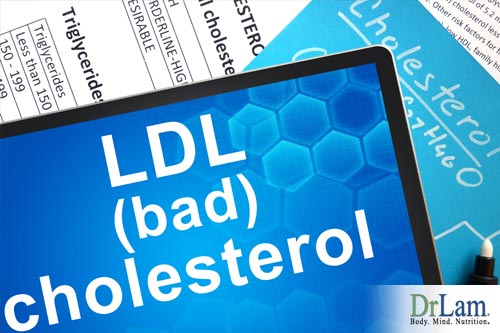 According to the package insert of Baycol, the recommended initial dose is 0.4 mg/day. This dosage reduces LDL by 34% on average. But 0.3 mg -- 25% less medication -- reduces LDL by 31%. This target is sufficient for millions with elevated cholesterol to reach. No provision is made for those of different body weight, age, or gender.
According to the package insert of Baycol, the recommended initial dose is 0.4 mg/day. This dosage reduces LDL by 34% on average. But 0.3 mg -- 25% less medication -- reduces LDL by 31%. This target is sufficient for millions with elevated cholesterol to reach. No provision is made for those of different body weight, age, or gender.
Some doctors start patients at even higher doses than manufacturers recommend due to poor information. Product inserts of most statin drugs (including Baycol) do not include guidelines on how to titrate dosage based on the patient's weight and age. The lowest available dose of Lipitor, the best-selling statin in America, may be stronger than millions of patients require achieving their target LDL cholesterol level.
Patients are treated like statistical averages, not like individuals - even when many individuals probably get better than average responses and therefore need only low doses.
The end result is over-treatment, which produces predictable and avoidable problems. Overuse of statin therapy was found among 69% of patients undergoing primary prevention and among 47% of patients undergoing secondary prevention in a recent article from JAMA. Simply put - over-treatment means increased, unnecessary risks for the patient. For some, especially those in compromised conditions, this may put them over the edge.
The rational physician has a duty to administer the lowest rational dosing not only to achieve the target total cholesterol and LDL cholesterol levels but also to avoid adverse effects.
If you are taking Baycol, talk to your doctor about switching to other drugs. Until more details are known, here is what you need to know if you take any statin drugs:
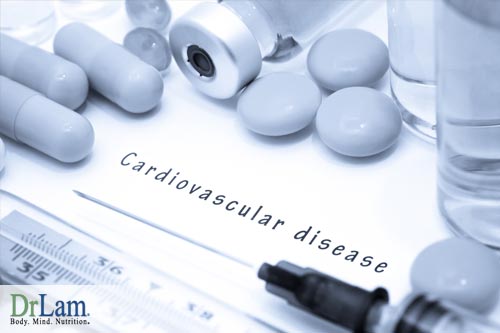 The trend to reduce serum total and LDL cholesterol started in the past two decades; when studies linked high saturated fat intake to increased serum cholesterol level. Cholesterol lowering statin drugs do reduce LDL cholesterol and a high LDL cholesterol level has been linked to increased cardiovascular disease. During this period, the average daily dietary fat consumption has gradually decreased, but the incidence of cardiovascular disease continues to increase. Obviously, the low fat high carbohydrate diet, so advocated as ideal for atherosclerosis prevention, does not work.
The trend to reduce serum total and LDL cholesterol started in the past two decades; when studies linked high saturated fat intake to increased serum cholesterol level. Cholesterol lowering statin drugs do reduce LDL cholesterol and a high LDL cholesterol level has been linked to increased cardiovascular disease. During this period, the average daily dietary fat consumption has gradually decreased, but the incidence of cardiovascular disease continues to increase. Obviously, the low fat high carbohydrate diet, so advocated as ideal for atherosclerosis prevention, does not work.
Sugar consumption has been increasing for the past 100 years and the trend remains unabated. An increased rate of cardiovascular disease is directly correlated to sugar intake and not fat intake. Most people don't realize that the surest way to reduce cholesterol is by reducing sugar intake and not reducing dietary cholesterol. Sugar includes grains such as wheat and rice. Also included are starchy underground vegetables such as potato, yam and carrot which convert quickly into sugar once inside the body. Sugar increases triglyceride storage and cellular oxidative damage. The body has been assaulted, especially the vascular wall, in a high sugar environment. It tries to self-repair and compensates by producing cholesterol and lipoprotein(a) from the liver. Cholesterol from the liver is transported to the rest of the body in the form of LDL cholesterol, a sticky substance that acts to patch up micro fissures at the inner layer of damaged blood vessels. Unfortunately, cholesterol and its relative lipoprotein(a) (so produced by the liver) accumulate and over time forms an atherosclerotic plaque. In reality, oxidative stress from a high sugar environment is the biggest trigger factor for increased cholesterol production in the body. Simple logic dictates that control of oxidative stress and sugar imbalances will automatically normalize the blood cholesterol level. And indeed it does.
In fact, studies have shown that a diet high in cholesterol will not lead to high blood cholesterol if the subject is healthy. The blood cholesterol level only increases by 3 mg/dl after ingestion of one egg day for a continuous period of 6 weeks (one egg contains about 230 mg of cholesterol) in repeated studies. Clearly, dietary cholesterol is not the main culprit.
On the contrary, too low a plasma cholesterol is not healthy. Blood cholesterol levels below 150 mg/dl have been linked to a higher incidence of cancer. It is equally important to pay attention to the total cholesterol / HDL cholesterol ratio and not to rely on the absolute level of total cholesterol itself as an indicator of cardiovascular heath. Some other important indicators include lipoprotein(a), homocysteine, and LDL cholesterol level.
Looking at the broader picture, one can easily surmise that the culprit of many degenerative diseases, including high cholesterol, premature aging, and atherosclerosis, rest with the imbalance of two simple elements - oxygen and sugar.
Oxidative stress, from excessive free radical damage in the oxygen respiratory chain, damages vascular walls. This leads to the excessive production of LDL cholesterol by the liver as the body tries to repair the "damaged vessels" which are undetectable by current laboratory measurements. Such LDL cholesterol and its relative lipoprotein(a), as earlier mentioned, form atherosclerotic plaques. Animals who have endogenous production of vitamin C that act as antioxidants, for example, rarely get heart attacks. Polar bears, for example, have a constantly elevated blood cholesterol level of 400 mg/dl and they seldom suffer from heart attacks. Their vascular system is protected by antioxidants. Humans, on the other hand, cannot produce vitamin C and must depend on exogenous supply for such anti-oxidant.
Sugar is the second insult. While we cannot live without sugar, excessive sugar intake leads to increased oxidative stress, triglyceride formation, and cortisol level. These are all pro-aging factors.
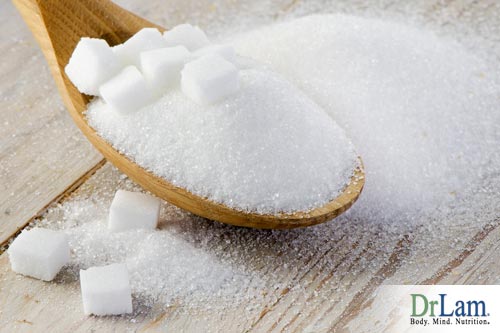 High sugar intake is linked to an increased risk of heart disease. Simple sugars are the primary source of high triglycerides, a type of blood fat, and very low-density lipoproteins (LDL), which are an independent risk factor for atherosclerosis. Sugar lowers good HDL cholesterol and raises bad LDL cholesterol and blood pressure levels. It is estimated that a high sugar intake may account for as many as 150,000 premature deaths from heart disease in the US each year.
High sugar intake is linked to an increased risk of heart disease. Simple sugars are the primary source of high triglycerides, a type of blood fat, and very low-density lipoproteins (LDL), which are an independent risk factor for atherosclerosis. Sugar lowers good HDL cholesterol and raises bad LDL cholesterol and blood pressure levels. It is estimated that a high sugar intake may account for as many as 150,000 premature deaths from heart disease in the US each year.
Studies have been conducted concerning cholesterol lowering drugs support this. In one research trial, 18 male subjects received normal food followed by a rigorously specified diet in which protein and carbohydrate requirements were met by amino acids, essential fat, and glucose. The average concentration of cholesterol in the initial period, on normal food, was 227 mg/dl. After two weeks on the restricted glucose diet, it had dropped to 173. Two weeks later, the level was at 160. When the diet was altered by replacing 25 percent of the glucose with sucrose (while all other dietary constituents kept constant), the average cholesterol level rose from 160 to 178 within one week and to 208 within two weeks. The researchers carried the study one step further. The sucrose was replaced with glucose again. With this change, the cholesterol concentration dropped back to 175 within one week and the decline continued. It finally leveled off at 150 mg/dl, which was 77 mg/dl less than the initial value. This research finding links the consumption of sucrose (table sugar) directly to increased cholesterol. The exact mechanism is still under research.
In addition to sucrose, fructose also raises the blood triglyceride level. In a clinical trial conducted at the University of Minnesota, researchers followed 24 healthy adults who received one of 2 diets assigned randomly for a period of 6 weeks and then switched back to the other diet for 6 weeks. One diet provided 17% of energy as fructose and the other diet was sweetened with glucose and absent of fructose. Both diets contained common foods and contained nearly identical amounts of macronutrients. The researchers found that, in men, the fructose diet raised plasma triglyceride levels by 32%, although there was no effect seen with the women being studied.
Elevated triglyceride blood level of in itself is a strong and independent risk factor for heart attack among middle-aged and elderly men. In fact, studies have shown that blood triglyceride level was a stronger risk factor than total cholesterol alone. It is not known why women appear to be immune to this other than postulations that the high level of estrogen acts as a protective factor. The exact mechanism is still under investigation.
Elevated cholesterol is a symptom and not a disease. The real disease is oxidative damage from excessive free radical damage caused by excessive metabolism of oxygen and sugar. Humans lack the endogenous capacity to produce vitamin C, a natural antioxidant. Instead, the body produces cholesterol as a surrogate. If you understand this concept, it is easy to appreciate that high cholesterol and a host of other age-related diseases, such as atherosclerosis, are nothing more than a series of symptoms reflective of the body's response to imbalanced oxygen and sugar metabolism. This may be a simplistic concept, but it drives home an important concept. To normalize cholesterol levels permanently, proper control of your oxygen load (through reduction of oxidative stress by taking antioxidants) and sugar load (by avoiding foods that are high in sugar and concentrate on low glycemic index food) is the first and most important step.
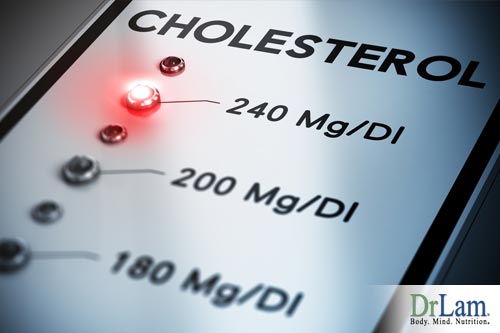 There is no doubt that statin drugs bring down LDL cholesterol level. But what is the concern with these cholesterol lowering drugs? The problem is that there is a dark side to these drugs. Statin drugs have been shown, for example, to increase fasting serum insulin levels by 13%, and decrease serum concentration of important antioxidant vitamins by up to 22%. There is also the significant lowering of serum Co-enzymeQ10, beta-carotene, and alpha-tocopherol level.
There is no doubt that statin drugs bring down LDL cholesterol level. But what is the concern with these cholesterol lowering drugs? The problem is that there is a dark side to these drugs. Statin drugs have been shown, for example, to increase fasting serum insulin levels by 13%, and decrease serum concentration of important antioxidant vitamins by up to 22%. There is also the significant lowering of serum Co-enzymeQ10, beta-carotene, and alpha-tocopherol level.
Unless you genetically have high cholesterol, lowering plasma LDL cholesterol can be achieved effectively by eliminating trigger elements through diet and lifestyle modifications. How can diet replace cholesterol lowering drugs? Keep reading. This can be done successfully by following my Anti-aging Food Choice Program and adopting my Anti-aging Strategies. They will lower your cholesterol naturally without side effects. Taking drugs to control cholesterol should be a method of last resort.
Since triglyceride elevation is almost universally related to dietary intake of sugar (including grains). It is one of the easiest and straightforward problems to correct with proper diet alone. The decline is dramatic and in a matter of weeks if the proper low glycemic low grain anti-aging diet is followed.
What can i do to avoide taking so many cholesterol lowering drugs? Start with eliminating all grain products from your evening meal. This includes wheat, rye, barley, potatoes, bread, and rice. You may find it difficult in the beginning and experience cravings. This is quite common because your body is already addicted after years of taking in lots of grains. By only removing grains from your evening meal in the beginning, the body will be able to slowly adapt and you'll still be able to cut roughly 30% of your grain intake! Do this for at least 60 days. As your body slowly get used to reduced grains intake, then also reduce grains intake at lunch. Substitute with more above the grounds vegetables, eggs (raw is best, and try not to cook the yoke too well), unroasted nuts. Oils are acceptable as longa as not exposed to high heat. Use virgin olive oil for salads and light stir-fry, butter for high heat frying, and coconut oil for deep frying ( which should be kept to a minimum). As usual, no dessert after dinner , and reduce snack before bedtime. All refined carbolydrates such as cookie , ice cream ,a nd chips should be avoided. Follow the above, and you will be surprised how quickly the triglyceride comes down. As the triglyceride normalize, the total cholesterol will reduce automatically, and the total cholesterol to HDL cholesterol ratio will automatically improve.
© Copyright 2005 Michael Lam, M.D. All Rights Reserved.
